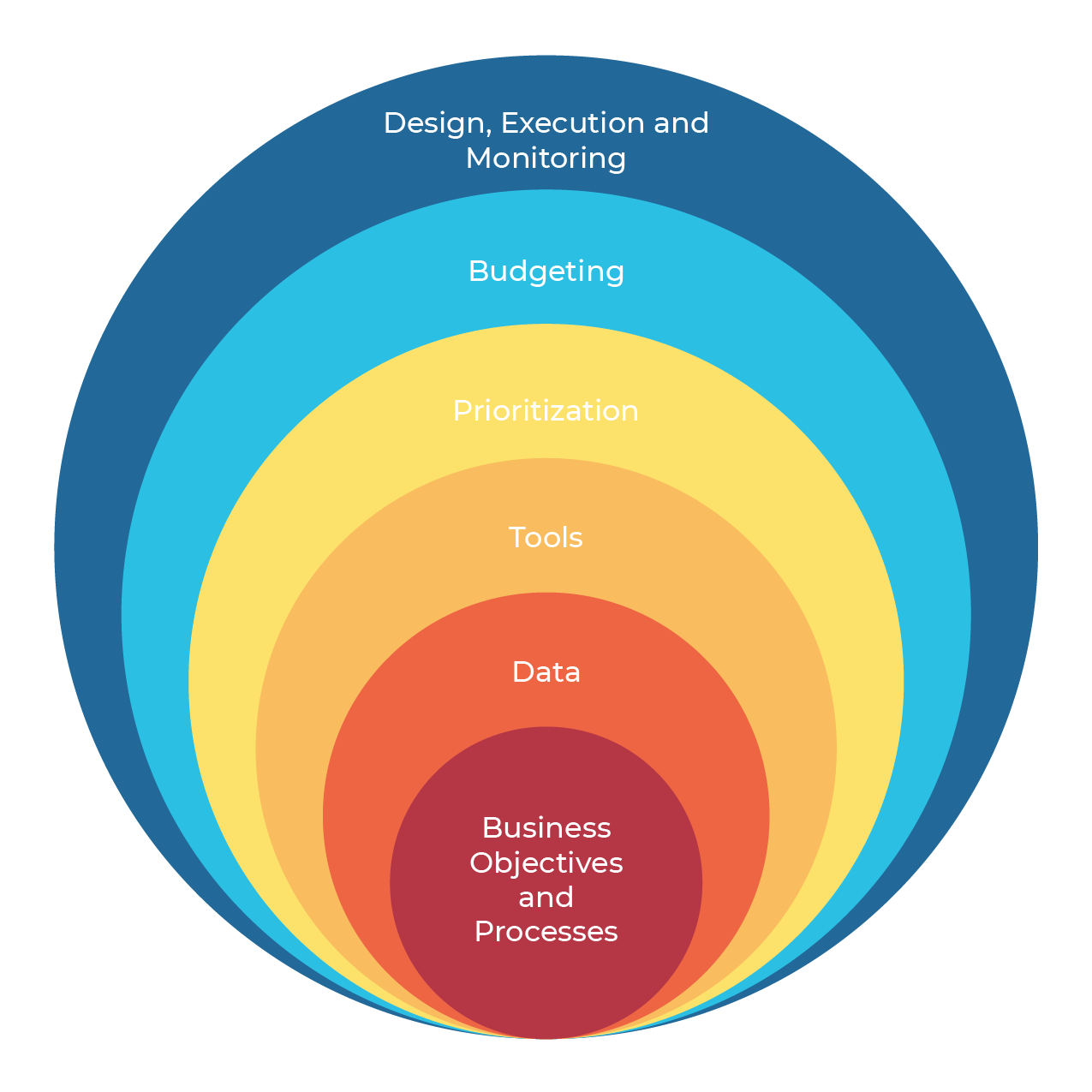Here we are, the outer layer of the “Onion”. All of the work that we have done so far is in preparation for actually addressing your Deferred Capital Renewal and Maintenance (DCRM) backlog. We are finally at the point of designing and executing on our prioritized plans. This is where the rubber hits the road, and the investments are made in improving your existing facilities. Keep in mind however that the work is not done when the construction is over!
Many of our clients breathe a sigh of relief when the construction/renovation projects are complete and their buildings “get back to normal.” However, there is an absolutely vital last step that if ignored, runs the risk of reducing many of the benefits of the IAM approach achieved so far.
Post project monitoring and data reconciliation must be done to close the loop on the cycle. There are a few keys points here that are important to make about data reconciliation.
First, if you don’t keep your data up-to-date based on the actual projects that you complete, you will not be able to interrogate your data in the future. Your forecast will be wrong. There is nothing worse (and I have been in the room when it happened) than standing in front of your Board asking for money to fund a list of projects and someone says, “Didn’t we approve that last year?” Every other item and point that you are trying to make may be correct, but it won’t matter as your credibility will be shot.
Don’t let your data go rotten on the vine as you go through year after year and complete capital renewal. Although it takes discipline, it is much easier to update it as you go, as opposed to forensically trying to do it at the end of a year, or even worse after a few years.
Second, when trying to “sell” your stakeholders on your plan, you will almost assuredly have promised some type of a result, perhaps a reduction in Facility Condition Index (FCI), reduction in energy usage, improvement of the indoor environment, or some other level of service. However, if you simply finish the project and move on, how do you know if you achieved what you set out to do.
A great example of this came following the first generation of green buildings. The certification was based on the design and construction, not the actual operations. When the existing building certification process came along measuring how the actual buildings were performing, many of the greenest buildings were not performing as designed. There were (and still are) lots of reasons this can happen (topic for another blog or series). However, the key message for today is that if the operators of these buildings had bothered to measure, they would have realized that something was amiss and moved to correct things much sooner.
The above example focuses on promises broken which will happen. When it does, it is critical that you understand why, try to fix the issues, or in the worst case, avoid making the same mistake twice.
The real benefit comes when you can demonstrate that you have done what you set out to do. By proving that you got the results that you promised, you can go back to your stakeholders and use the proof as ammunition to seek more resources to address more renewal work.
Finally, if you are able to achieve cost savings as part of your plan (energy savings, decreased maintenance, etc.) you are lucky and can funnel those savings into more renewal, creating your own type of compound interest to help concur your DCRM backlog.




